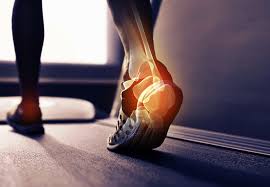Medical Notes
Bone Health in Athletes

Achieving an optimal peak bone mass is very important in bone health of a woman and will prevent many osteoporosis complications.
Exercise (especially weight bearing exercises) together with a good diet rich in calcium and vitamin D are essential components of a healthy life style for bone health. Risk of hip fracture in older females can be reduced if adolescent and teenage girls engage in regular physical activity. Physical inactivity is one of the recognized risk factors for osteoporosis; the increased rates of hip fracture in recent years are thought to be partly caused by the drastic decrease of habitual activity. Prescribing exercise to all, therefore, would sound appropriate. Weight-bearing exercises appear to yield the most bone gain. Regular exercise could also be used as a treatment in patients whose bone mass is already reduced and may allow a reduction in medication requirements and thus avoidance of the side effects of drug treatments. Taekwondo is a weight bearing sport and in a study (Young Ho et al, 2011) it has been shown that the bone mineral density is significantly increased in taekwondo players compared to sedentary individuals. And the effect of martial arts on increased bone mineral density is also shown in both female and male athletes participating in judo exercise compared to sedentary individuals (Hideki Ito et al, 2016). However, if the female athlete triad, or better to say REDS affects an athlete, bone health may be severely compromised. So the condition should be prevented, diagnosed and treated accordingly as soon as possible. Hip fracture is the most serious consequence of osteoporosis. Osteoporotic femoral neck fracture may be a tragedy because of complications of the surgery, immobility, and higher mortality rate. So prevention of osteoporosis is vital to all individuals. Even in older osteoporotic adults, it reduces fracture risk by increasing quantity and quality of bone, improving muscular strength, flexibility, stability, coordination, gait velocity and reducing the severity of falls. By: Dr. Laleh Hakemi, Internist, Vice-President of Sports Medicine Federation of Iran- Women Affairs, Head of Medical Committee of Taekwondo Federation of Iran
- 09:06
- 1399/11/13
- 1448
